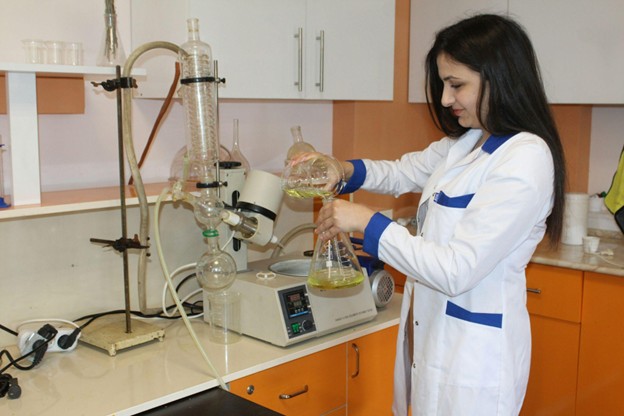The urgent need for sustainable solutions continues to grow. Climate change, pollution, and the rapid loss of natural resources threaten the health of communities and ecosystems everywhere.
Finding new ways to maintain a livable world is one of humanity’s great challenges. Bioengineering offers hope, using biology and technology together to produce smart answers for complex environmental problems.
While this field draws from biology, chemistry, and engineering, its focus on real-life fixes like clean energy, less waste, and healthier soils makes it a practical driver for building a more sustainable future. As research moves from the lab to large-scale projects, bioengineering holds great promise for supporting planetary health.
Bioengineering for Clean Energy and Pollution Reduction
Bioengineering is leading the shift toward cleaner energy and reduced pollution. Scientists and engineers use biological tools to tackle the root causes of greenhouse gas emissions and plastic waste.
They look for sustainable options to fossil fuels, advance more efficient ways of dealing with garbage, and use nature itself to clear up spills and industrial byproducts. These breakthroughs go far beyond theory. Around the world, real-world projects already show concrete benefits for soil, air, and water.
Genetically engineered organisms shape much of the biofuel sector today. Crops like switchgrass and miscanthus produce more energy per acre than classic corn or soy, and scientists have designed strains to grow faster with fewer resources. At the same time, algae take in sunlight and carbon dioxide to produce oils that serve as clean-burning fuel.
Compared to standard diesel or gasoline, these algal fuels produce less carbon while using up carbon dioxide in the process. Other advances focus on biogas. Engineered bacteria and yeast break down waste from farms, sewage, or food processing.
The result is methane or hydrogen gas that works in power plants or heats homes. This process turns waste into value, avoiding the methane release that comes from rotting garbage, and provides a reliable energy stream that can run all year. The key benefits show up in two ways.
First, biodiesel and biogas made by engineered plants and microbes emit fewer pollutants. They cut down soot and lower greenhouse gas totals. Second, the shift to bio-based fuels means less demand for oil, which slows deforestation and protects sensitive land from drilling.
Plastic pollution clogs rivers, coastlines, and even the deep ocean. Synthetic plastics resist decay and break into tiny pieces that harm wildlife and enter the food chain. A new solution appears in bacteria crafted to eat plastic.
These engineered microbes release enzymes that chop up complex molecules in bottles, wrappers, and even polyester clothing, breaking plastic down to its building blocks. Companies now build reactors where bacteria turn shredded waste into safe, reusable material, reducing the need for new plastic and shrinking polluted landfills.
Engineered microbes also clean up toxic spills. Traditional chemical cleanup often leaves behind hazardous remains or costs too much to use on a large scale. Microbes, on the other hand, can feed on oil spills, pesticides, or heavy metals and convert them into simple, harmless compounds.
These living sponges treat polluted water and soil without digging up the earth or introducing more stress to local ecosystems. Field tests make a strong case for these methods. Projects using such microbes have already marked drops in soil toxins and surface oil in test sites. As more facilities adopt this technology, widespread reductions in water and land pollution seem likely.
Bioengineering in Agriculture and Conservation
The role of bioengineering in food and conservation brings benefits close to home. Farming uses huge amounts of water, fertilizer, and land, putting strain on resources and habitats.
New crops and better ways of managing land help keep food supplies stable while protecting nature. Conservation efforts use genetic tools to save endangered species and keep entire habitats alive and healthy.
Crops need water, light, and nutrients to grow, but some areas suffer from drought or poor soil. Engineers have created plants that thrive in dry climates and resist pests, needing fewer pesticides and less irrigation.
Traits like deep roots, tougher leaves, or disease resistance allow these plants to grow when the rain fails or when hungry insects strike. Corn and rice with these upgrades feed people more reliably while requiring fewer chemicals, which means less pollution runoff and healthier streams.
For farmers, using these improved seeds can raise yields and lower costs. In parts of Africa and South Asia, drought-tolerant maize lets farmers cope with unpredictable weather. Cotton with built-in pest resistance means fewer sprays, safer working conditions, and lower risk to pollinators.
By keeping more water and nutrients locked in the soil, these crops encourage better soil health and let farmers grow food year after year on the same land. On a larger scale, less thirsty crops save entire regions from over-tapping rivers or draining aquifers dry. Efficient irrigation and careful crop choice can stretch supplies and keep water available for wildlife and towns as well.
Loss of biodiversity is another crisis. Species vanish at rates not seen in millions of years, often because of shrinking habitats or new diseases. Bioengineering steps in with new answers. Genetic rescue brings endangered species back from the edge by boosting genetic diversity or removing disease vulnerability.
Black-footed ferrets, for example, have received a genetic boost to survive outbreaks of plague, and coral reefs now get help with heat-resistant genes that may secure their place as oceans warm. Engineers also tackle invasive species by using gene editing to limit their spread.
One project involves controlling mosquitoes that carry disease by altering their breeding patterns, which cuts both the mosquito population and illnesses like malaria. In Australia, similar work focuses on cane toads, reducing their numbers without toxic chemicals.
Restoring habitats can sometimes mean reviving lost plants with genetic tweaks so they once again provide shelter and food for animals. Seeds banked in storage or old roots grown in labs can take root with help from engineered traits, filling empty spaces in grasslands or forests.
The ecological payoff runs wide. Restored areas give wildlife room to return. Streams run cleaner as native plants replace invaders. Food webs grow more stable, and healthy ecosystems can absorb shocks from storms or heat waves more easily.
“Bioengineering stands at a key point in the search for sustainable living,” says Shawn Dahl, a seasoned bioengineering professional. “Its tools help reduce pollution, produce cleaner energy, and repair damaged habitats. These advances touch many parts of life, including how we heat homes, grow food, and support forests and rivers.”
As more people and groups use these methods, they offer new hope for dealing with climate change and resource loss. Of course, every new tool raises questions. Genetic changes must be tested to avoid harm to wild species or unexpected effects in nature. Ethical oversight keeps projects safe and in line with what people value.
Innovation remains crucial, as old problems return and new ones develop with changing weather, growing cities, and shifting global demand. The promise of bioengineering depends on careful use and oversight. It opens fresh options for healing the planet and building a future where clean water, rich soils, and balanced ecosystems are within reach.




